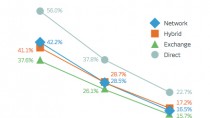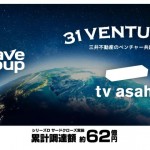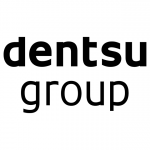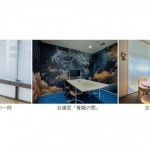プレミアム媒体をRTBへ・・・・そもそも「プレミアム」って?(英文)
2013.2.27
The word “premium” is bandied about the advertising industry to – at a minimum – add a glow to digital ad inventory. But, what does “premium” mean?
AdExchanger reached out to executives in the online ad tech ecosystem for their thoughts on the following question:
“What makes ‘premium’ premium? Please share your top three attributes of ‘premium’ inventory.”
Click below or scroll for more:
- Shawn Riegsecker, CEO, Centro
- John Ramey, CEO, isocket
- Lorne Brown, CEO, Operative
- Jonathon Shaevitz, CEO, Legolas Media
- Roy Pereira, CEO, Shiny Ads
- Joe Pych, CEO, NextMark
- Joelle Frijters, CEO and Co-Founder, Improve Digital
Shawn Riegsecker, CEO, Centro
- Professional (and Credible) Content Adjacency: ads that are displayed next to content produced by professional journalists perform the best and receive the highest premiums.
- Size: it’s fairly obvious but in almost all cases, bigger is better. Homepage sliding billboards, wallpapers, re-skins and IAB rising star units significantly outperform old ad sizes such as 300×250, 728×90 and 160×600.
- First-Party Data Attachment: inventory with proprietary first-party publisher audience data associated to it separates it from inventory utilizing aggregated, and mostly commoditized, third-party data.
- Guaranteed / reserved campaigns. None of the uncertainty that comes with the spot market.
- People doing business directly with each other, where transactions are not auction driven in the spot market (RTB, private exchange, etc.) This matters because publishers traffic most ad tech tags (like SSP tags) at the bottom of their ad server.
- Not all impressions are created equal: premium can be above the fold, not surrounded by junk, visible on “entrance” pages, earlier in user session, etc. Context and the publisher’s brand do matter!
Lorne Brown, CEO, Operative
- Go across screens, and be measured by the same currency (impressions). Brands want to follow their consumers on the go, not just on their desktops, and to do it in a way that can be measured and optimized quickly, across the multi-platform experience.
- It’s sold by direct sales people, not machines. People sell ideas, and people get creative. There’s no programmatic substitute for enabling someone’s brand. There’s a reason that CPMs for directly sold inventory are 10 to 20 times that of machine-based buying. Having a third party in the middle of the brand and the consumer is no way to excite people to buy your product. The publisher is the conduit and their understanding of their premium inventory and their consumer, communicating that back to their client, with people, is what makes it premium.
- If it isn’t complex to deliver, it likely isn’t premium in the mind of a brand. Premium inventory is creative, it’s innovative, it gives a brand something they can’t get anywhere else… and because of this, it’s complex. It’s also six times more costly than traditional media to deliver. But just because it’s complex doesn’t mean they shouldn’t do it… they just need help, because complexity is outpacing premium inventory revenue growth by double in the last two years.
Jonathon Shaevitz, CEO, Legolas Media
- Certainty of inventory, pricing, delivery, and placement of ads.
- Creative freedom enabled so that ads have high impact.
- Ads placed on the top online publisher properties to ensure brand safety.
Roy Pereira, CEO, Shiny Ads
- Guaranteed Placement. The inventory needs to be a prominently placed ad unit that offers a first look impression for specific criteria, which the publisher guarantees for optimum placements during a specific campaign.
- Tier 1 Web Site. Premium publishers have invested a lot in building their brand recognition and a specific audience for their web site. This is premium inventory that should be controlled and priced just like luxury brands do with their products.
- Brand Safety. Placements on inappropriate web pages can negatively impact the advertisers brand so they want to ensure the surrounding page content aligns with their brand standards. Premium inventory should offer this assurance.
- Reaches a desirable audience.
- Is prominently displayed and positioned – highly “viewable.”
- Is adjacent to quality editorial, advertising, and other content – in a “neighborhood” that builds brand equity.
Joelle Frijters, CEO and Co-Founder, Improve Digital
- Provides the right context – Context counts! The reason why people wish to wear a Rolex and pay 100 times the real manufacturing value, is not caused by seeing their ads on all kinds of B-level media. It’s the association that brand gives us with lots of other things, built up by the right message in the right context. Apple never became a favorable brand by blindly running their ads chasing their audience all over the place looking for clicks
- It is programmatically enabled to allow better targeting at scale – Relevance works! Using data to target a certain audience more precisely, at the right time, with the right frequency at scale is key to increase relevance. Enabling inventory for programmatic buying ensures scale can be reached at a highly targeted level.
- It’s available in the right format enabling brands to “touch” consumers with their message – Creativity is key! To be able to actually “touch” consumers premium inventory is flexible in formats, sizes and screens to enable the best creative work to digitally build brands.
from:
http://www.adexchanger.com/publishers/premium-inventory/#centro











